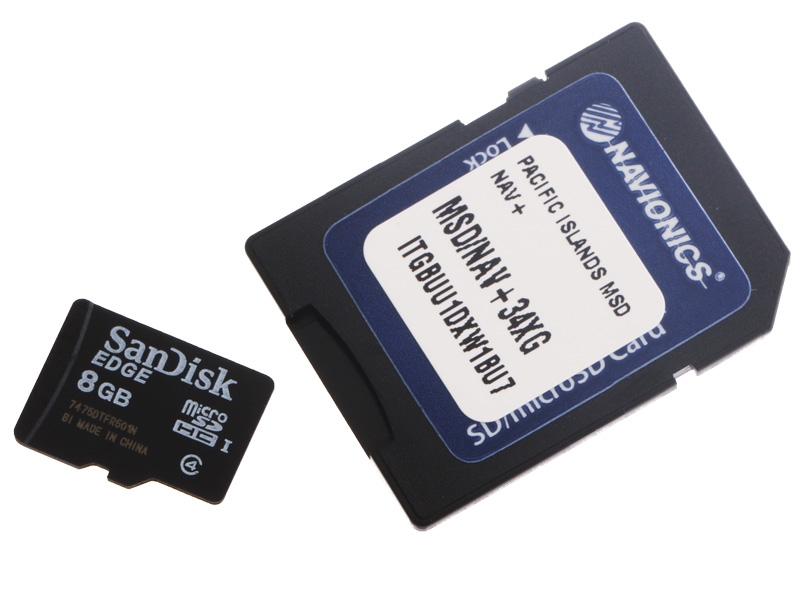
These cards offer a few extra features compared to the standard mapping cards, and while they are more expensive, the added cost is fairly small for the added features.
#Navionics card plus#
Both of these features are only available with the Navionics platinum and the Lakemaster Plus cards. Navionics chips and Lakemaster mapping chips both have satellite overlay features. Navionics vs Lake Master: Satellite Maps Overlay

While something I don’t take advantage of this depth range feature personally, this can be convenient on reservoirs or impoundments with a high fluctuation of water. Water level adjustīoth Lakemaster maps and Navionics mapping cards have a water level adjustment feature included. This option is also great as a safety feature, so you know where any shallow areas like reefs or sandbars are located that may potentially damage your boat or your motors’ lower unit. These options are great for finding areas or structure. Shallow water highlightĪs mentioned above, both chip offerings offer a shallow water highlight option to focus on a certain depth range. If you want to view everything under or over 5 feet in depth, you can highlight 5 feet or less in one color like red and have an easy and accurate view of these areas. You can also highlight certain depths to help features and detail stand out. Most of the time, when on a smaller lake, this isn’t an issue, as it’s easy enough for anglers to cruise around and find spots with sonar and mark them with waypoints, and in areas like Wisconsin and Minnesota, even smaller sized lakes can have high-quality maps and the coverage might only be lacking on small remote lakes with no boat access, it really comes down to being an almost non-issue with both Navionics and Lakemaster SD maps. Most popular regions and bodies of water will show that both equally have superb mapping and coverage, but the small off the beaten path lakes might not have the high definition and detail contouring that other lakes will have, and the difference could be drastic with contours every 10 feet. Lakemaster and Navionics are pretty close when it comes to coverage. Navionics and Lakemaster mapping sonar charts feature high-quality hydrographic maps at the end of the day, and you can’t go wrong with either one if you have a suitable platform in this aspect. If you want to view everything under or over 5 feet in depth, you can highlight 5 feet or less in one color like red and have an easy view of these areas.

You can also highlight certain depths to help them stand out. You can also custom tailor the maps, with the option to change the contour line settings from 1 foot, 5 foot, 10 foot, increments, and anything in between. I would consider them to be a tie in the ease of viewing department. On a personal level I prefer Lakemaster over Navionics, but other anglers might think the opposite, and it comes down to personal preference mostly. The quality of both Lakemaster and Navionics is very good. Navionics vs Lakemaster: Quality of mapping detail Navionics cards will work with Lowrance, Simrad, Raymarine, and even Humminbird units. Navionics, on the other hand, works with many different brands of sonar units on the market, which is a plus for any angler who doesn’t use Humminbird sonar units.

This might be due to some agreement between the two companies, but with Humminbird being one of the top, if not the #1 sonar unit brand used, it works for Lakemaster. Lakemaster map cards are only compatible with Humminbird units. The compatibility between both Navionics and Lakemaster is quite different. Let’s compare Navionics vs Lakemaster and see the pros and cons of both GPS mapping cards.

Lakemaster and Navionics GPS cards for sonar/GPS units are two of the most popular GPS mapping cards available, especially for inland fishing around the United States and Canada, with charts for states, regions, or for large individual lakes and rivers.


 0 kommentar(er)
0 kommentar(er)
